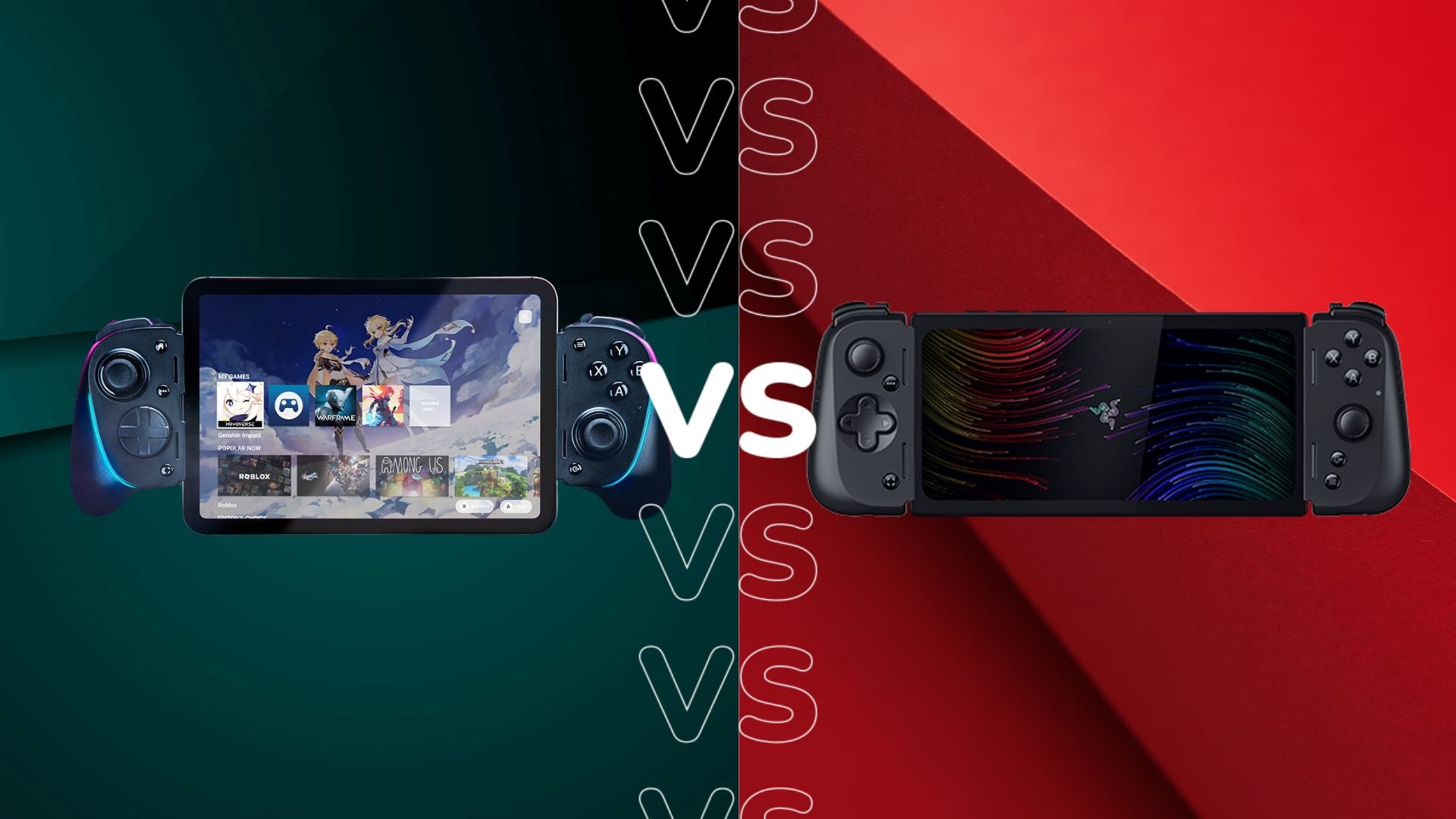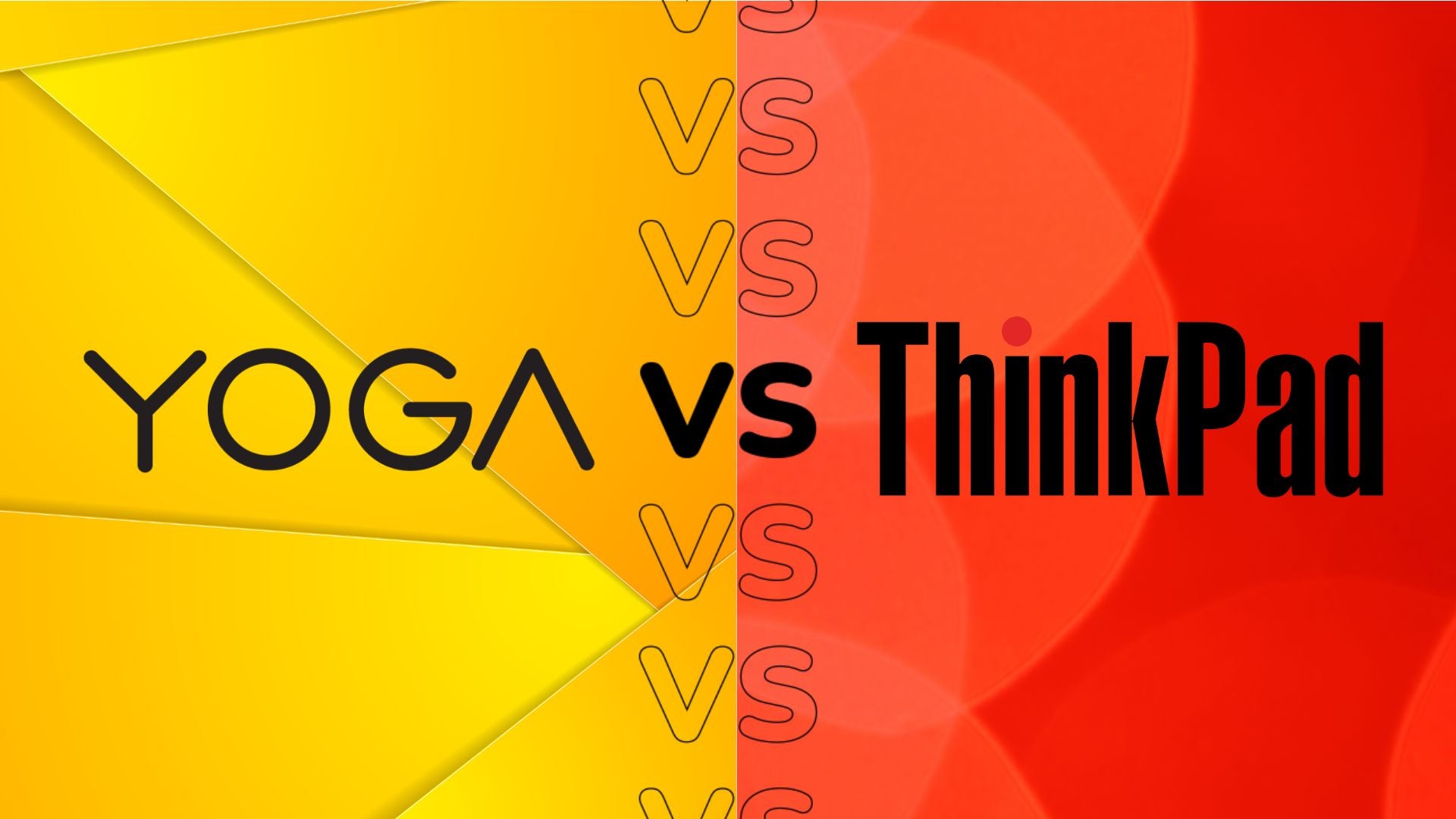Xiaomi Redmi Note 12 Pro Plus 5G vs Samsung Galaxy A54 5G: All the key differences
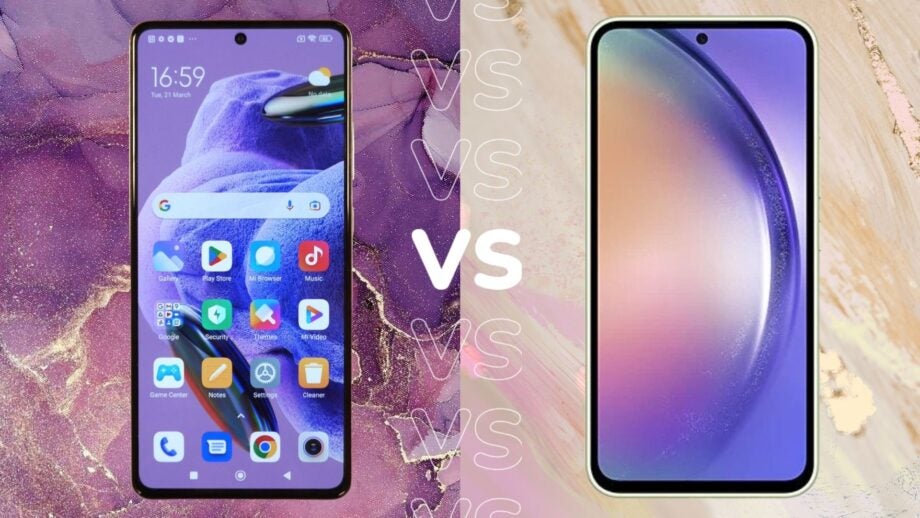
Xiaomi finally announced its latest flagship handset with the Redmi Note 12 Pro Plus 5G. But how does it compare to other handsets on the market?
We’ve already been lucky enough to test out the top-end Xiaomi 13 Pro, but now we want to take a closer look at the budget-focused Redmi Note 12 Pro Plus 5G.
But how does it stack up against other newly released handsets, such as the Samsung Galaxy A54 5G? We’re going to be looking at all the differences between these devices so you can decide which Android update suits you best.
They have the same price
Both the Redmi Note 12 Pro Plus 5G and Samsung Galaxy A54 5G will be priced at £449 in the UK.
That means cost won’t need to be a factor when you’re deciding between the two phones.
The Galaxy A54 5G has a brighter screen
The Redmi Note 12 Pro Plus 5G features a 6.67-inch AMOLED display with a 2400 x 1080 resolution. This combination should provide users with a crisp experience and vibrant saturated colours, aided by the support for the DCI-P3 wide colour gamut.
Xiaomi also notes that this handset has a refresh rate of up to 120Hz. While it’s not clear yet how low the refresh rate can go – with a lower refresh rate being best in terms of battery conservation – a 120Hz refresh rate should make jumping between apps and scrolling through large documents look smooth and seamless.
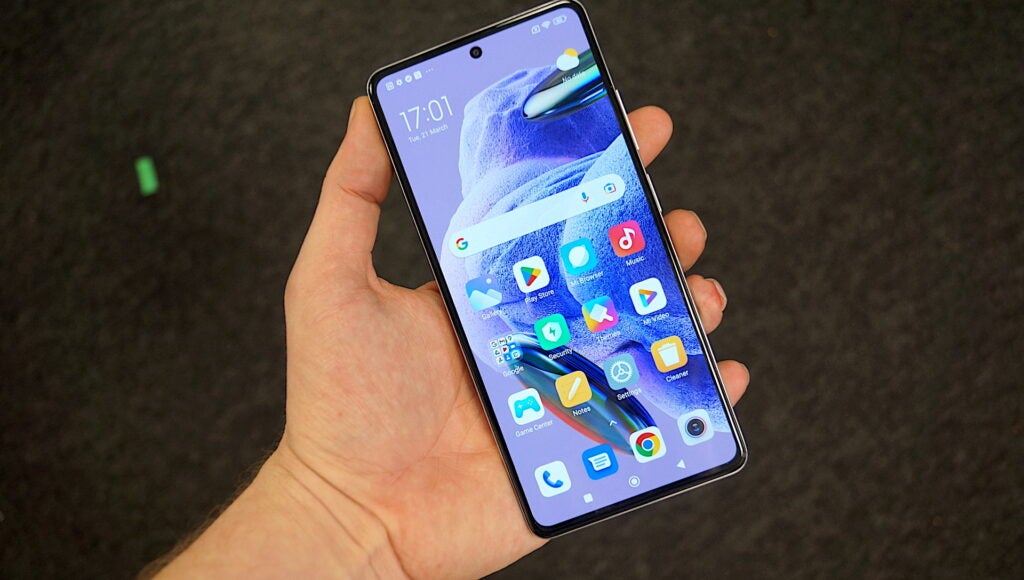
The Galaxy A54 5G boasts a similar setup, with a slightly smaller 6.4-inch Super AMOLED display and 1080 x 2340 resolution. The FHD+ resolution on both handsets should provide a very similar user experience when watching media, with our first impressions noting that the screen looked vibrant and detailed.
Samsung does have a slight edge here, as its handset has a peak brightness of 1,000 nits. This should be more than effective enough to be used in bright environments, making it suitable to browse or read in direct sunlight.
The Redmi Note 12 Pro Plus 5G has a peak brightness of 900 nits, putting it just behind its Samsung rival. Until we get both of these handsets in for a full review, we can’t make too many claims about which display feels better to use, but it looks like the Galaxy A54 5G may win out in that department.
MediaTek Dimensity vs Exynos processor
The Xiaomi Redmi Note 12 Pro Plus 5G features the MediaTek Dimensity 1080 processor, which is built on a slightly older 6nm process and as the handset name suggests, is 5G ready. Xiaomi claims that this handset packs a powerful cooling system with a large 3,000mm total heat dissipation area, which should ensure that your device does not overheat even during intensive tasks, like gaming.
Since we have not been able to test out this phone in full yet, we can’t say how snappy it feels to use. However, it should provide smooth performance and thanks to the cooling system, take on some slightly more intensive tasks without too much struggle. Just don’t expect to run AAA games on such a mid-range chipset.
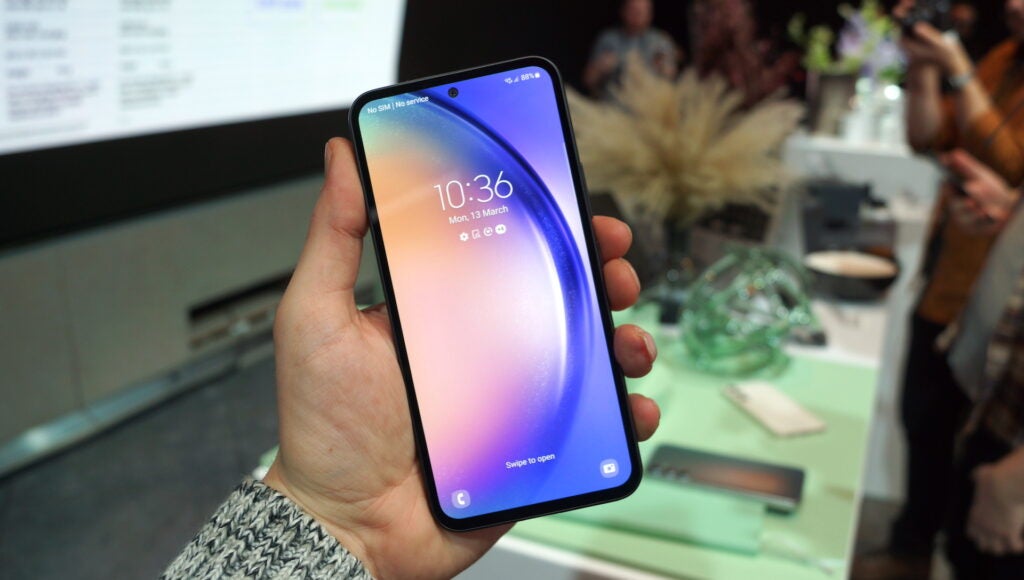
The Galaxy A54 5G sports an upgraded 5nm Exynos 1380 chipset, the latest one in the company’s roster having been revealed only a few weeks prior to the handset’s announcement. Samsung claims that this chip provides a 20% CPU boost and a larger GPU gain of 26% when compared to its predecessor. We did not note any lag or stutter during our short test period, but since the Exynos chipset hasn’t traditionally been the best at power efficiency, we will have to see how it holds up over longer periods of time.
The Redmi Note 12 Pro Plus 5G features a 200MP main sensor
Turning towards the camera set-up, the Redmi Note 12 Pro Plus 5G features an impressive 200-megapixel main sensor at 1/1.4 inches. There is also an 8MP ultra-wide sensor, 2MP macro sensor and a 16MP front camera for taking selfies.
Xiaomi claims that this main sensor has a 159% improvement in low-light environments when compared to its predecessor, as well as the inclusion of ALD (Atomic Layer Deposition), which should allow for better image performance in complex lighting conditions. This is also the first Redmi Note handset to feature OIS, enabling it to capture stable and clear shots in low-light conditions.
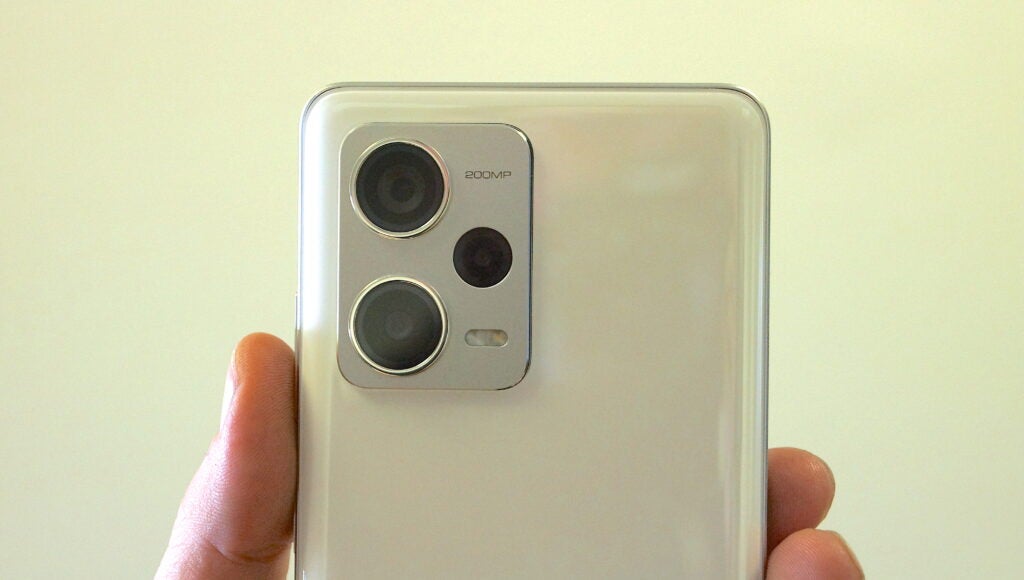
The Galaxy A54 5G packs a less impressive setup, featuring a 50-megapixel main sensor, 12MP ultra-wide sensor and 5MP macro lens, with the last two sensors being largely unchanged from last year’s Galaxy S53 5G. Initial test shots with this handset looked promising when using pixel-binning tech to compress that 50MP image into a more usable 12MP image, although they were taken in a very well-lit environment.
The selfie camera on the Galaxy A54 5G has been kept the same at 32MP, which should be capable of taking detailed selfie shots. OIS also features on the main rear sensor, which should enable the same stable and focused shots as on the Redmi Note 12 Pro+ 5G.
120W HyperCharge on the Note 12 Pro Plus 5G
The Redmi Note 12 Pro Plus 5G seems to pack an impressive battery life; it features a large 5,000mAh battery as well as 120W HyperCharge, which Xiaomi claims can charge the handset to 100% in just 19 minutes.
We’ll have to take this will a small pinch of salt until we can test this claim for ourselves, but it looks like the Redmi Note 12 Pro Plus 5G could be a winner when it comes to battery. The company claims that this handset boasts improved battery health and battery efficiency, meaning that it should not drain too fast during day-to-day use.
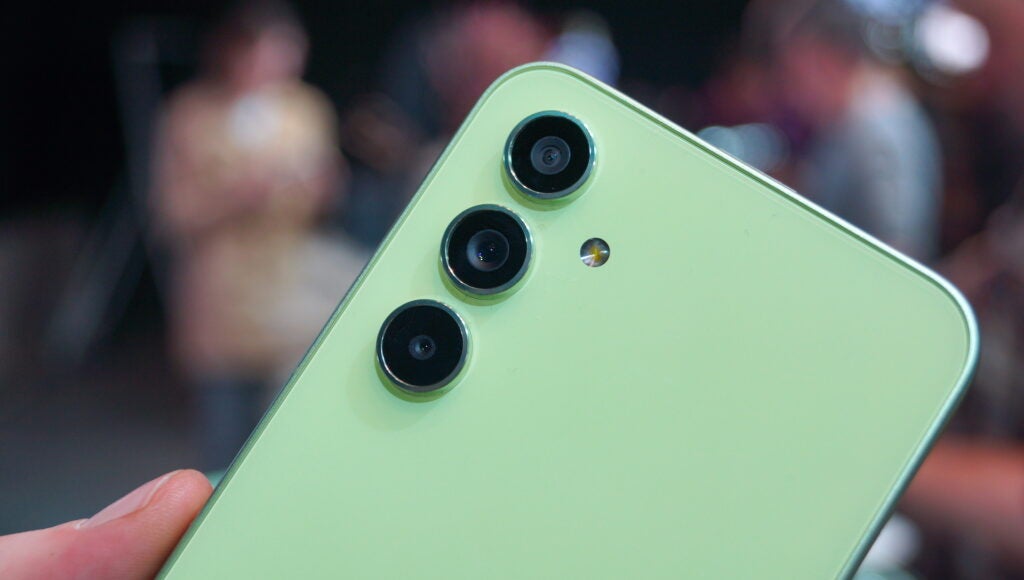
The Galaxy A54 5G also packs a 5,000mAh battery, however, it falls short when it comes to charging. It tops out at just 25W, which will not be able to provide the same fast charging capabilities as HyperCharge, and unlike Xiaomi, there’s no charging brick in the box either. We can assume that charging up this handset will take around two hours, although we have not been able to test this claim yet, making it a lot less alluring for consumers that prioritise battery life.






